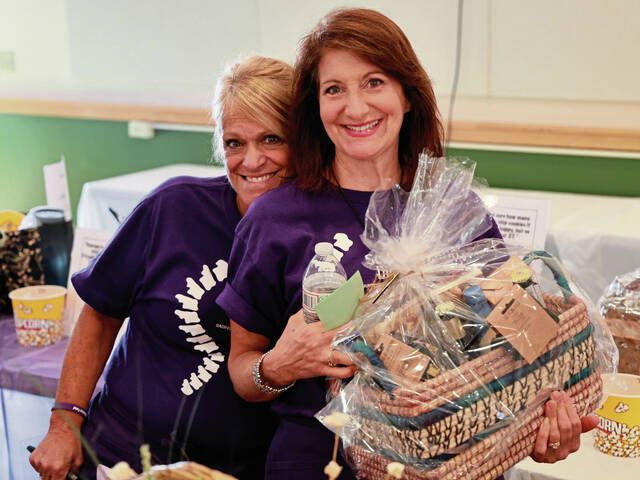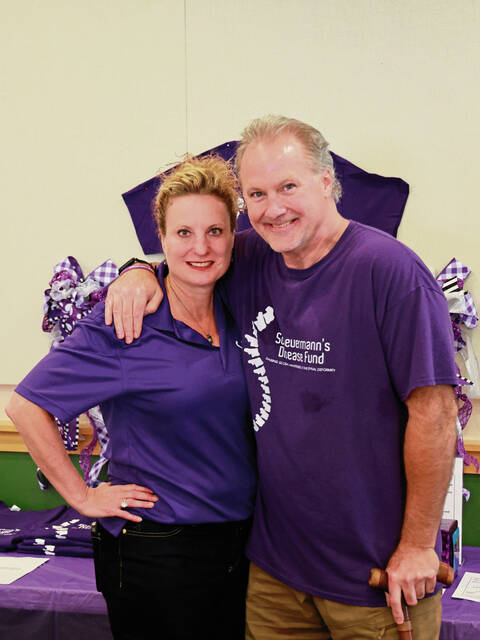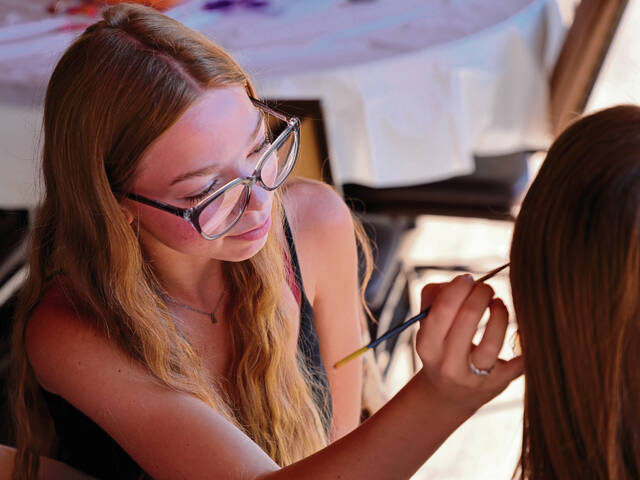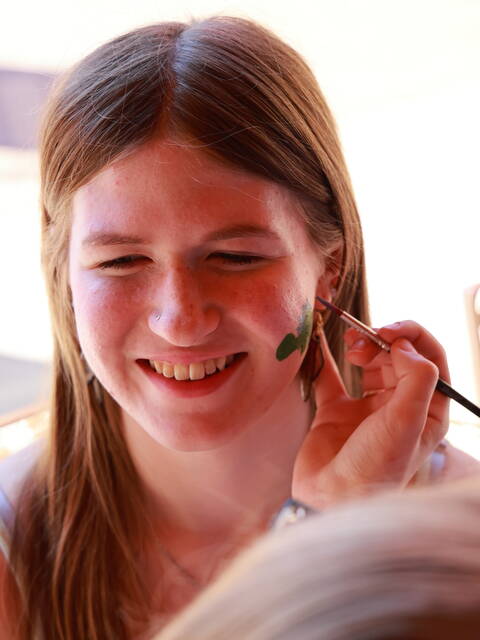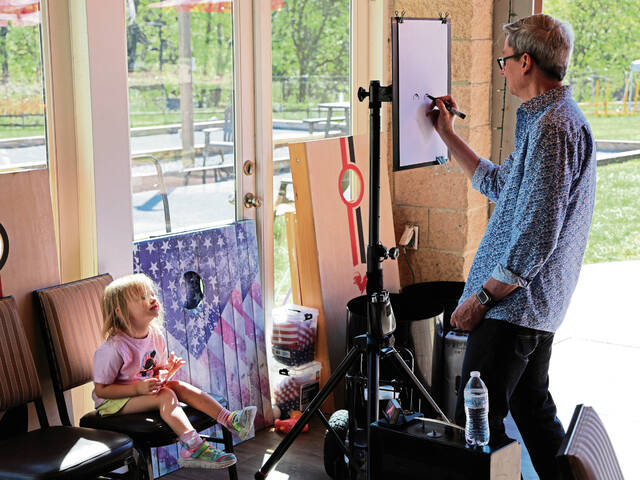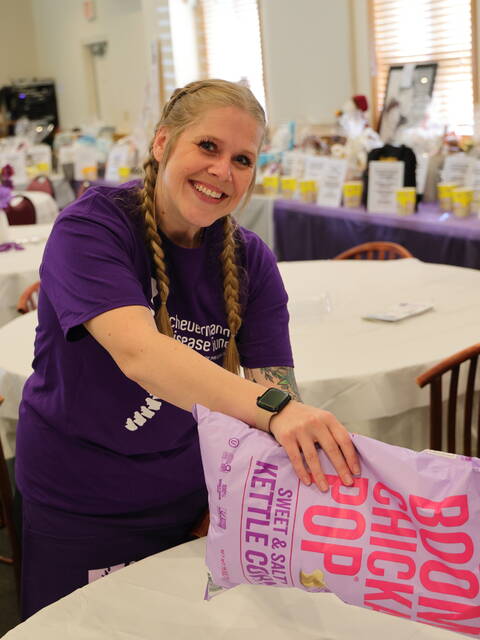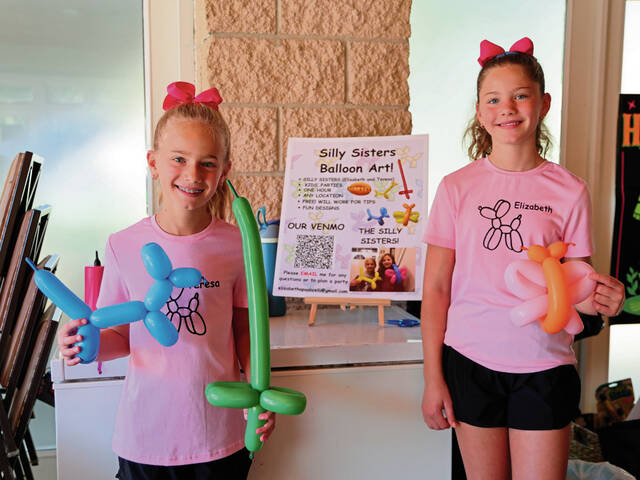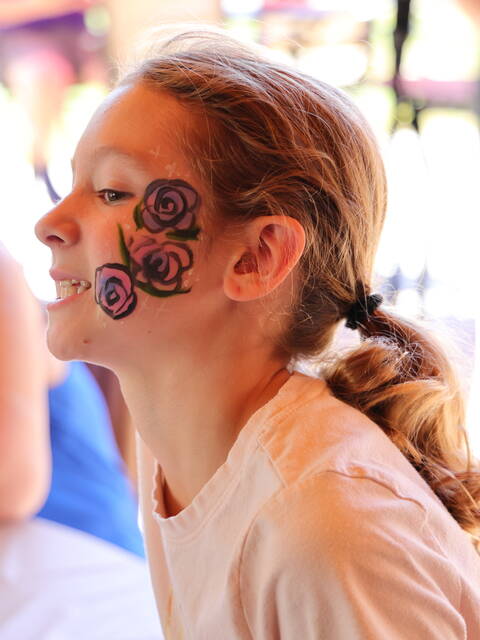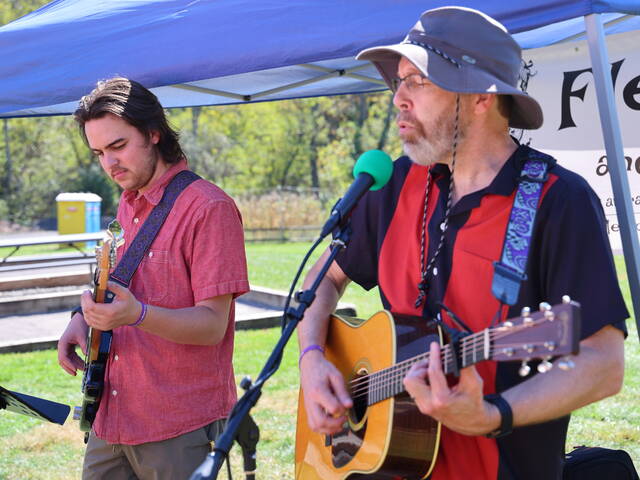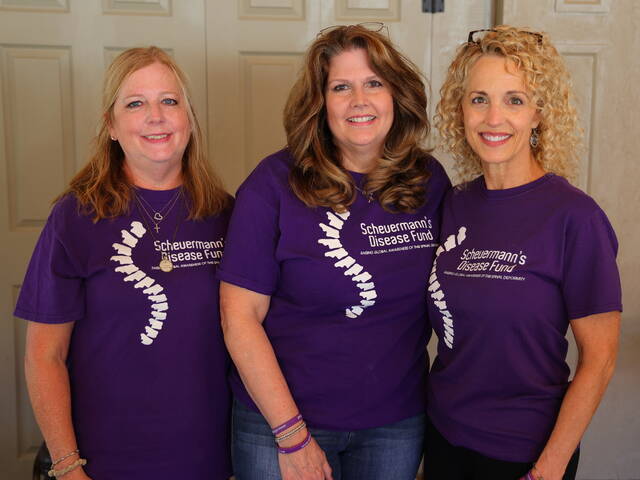Afflicted Baldwin native’s nonprofit fights rare spinal disease
When members of the Baldwin High School Class of 1983 held their 30-year reunion, Doug Strott declined to attend.
“I was embarrassed because I had to use a cane,” he explained. “When I told my friends, they were kind of mad at me. But they said, ‘OK. We understand.’”
As the reunion wrapped up, alumna Sharon Chalovich Skittle announced to those in attendance:
“We want to let you know that Doug Strott’s not here, and you all know Doug. He’s not here because he has a rare spinal disease. We’d like to donate the proceeds from the end of the night to the charity for Doug.”
The $700 raised during the reunion marked the first contribution to what became the Scheuermann’s Disease Fund, which Strott founded in 2014 with the help of another Baldwin ’83 classmate, Chrissy Simko Jacobs.
“We ended up outlining how we wanted the charity to look, and that’s how it started,” Strott said during the 12th annual fundraiser for the nonprofit, held Oct. 5 at the Alpine Club in South Fayette. The event featured music, food and drinks, auctions, raffles and plenty of activities for kids.
Strott, who lives in Peters, has made it his mission to promote awareness about the disease that struck him as a teenager and advocate for spinal screenings among young people. His nonprofit serves as a repository for the latest information and available resources.
“Scheuermann’s causes physiological changes to a person’s body, and they happen during adolescence,” he said. “Unfortunately, when our bones stop growing, these changes become permanent. That’s why we shoot for early detection.”
Named after the Danish surgeon and radiologist who first described it more than a century ago, the condition involves an abnormal, excessive curvature of the spine. Diagnosis is most commonly made in adolescents aged 12 to 17 whose parents notice a postural deformity, and it affects between 1% to 8% of the U.S. population, according to the National Center for Biotechnology Information.
Strott was 13, a football player in middle school, when his back started to bother him, “and I had no idea why.” His height subsequently shot up 10 1/2 inches in two years.
“With Scheuermann’s disease, it happens a lot of times to kids who are not only athletic but also have a growth spurt,” Strott said. “During that period of time, we have pictures that you can see the curvature changing in the back.”
At 17, he received his diagnosis and was fitted with a Milwaukee brace, a full-torso orthopedic device with a neck ring and pelvic girdle connected by metal bars that he wore “every waking moment for about two years.”
“The problem with Scheuermann’s is that it throws your head and your hips out over your body, and that causes your cervical spine in your neck and your lumbar discs in your lower back to deteriorate much more quickly,” he said.
Despite the health challenges, he launched a career in financial services, frequently traveling for his job. He eventually made his home in Austin, Texas, where he encountered a problem while working out one day, while following his doctor’s directive that he stay in shape to avoid stomach fat, which would hurt his lower back.
“I found out when I was done that my hands were literally paralyzed. I couldn’t grab the key to open the locker. It took me about 20 to 30 minutes to get the movement back in my hands,” Strott said. “I figured that I had just pinched some nerves in my shoulders.”
He went to a rheumatologist, who promptly sent him to a neurosurgeon.
“I needed an emergency spinal fusion. So they went in first through my throat,” Strott said, to work on five of the vertebrae in his neck.
The initial procedure was not successful.
“So I had to have fine spinal-fusion surgeries in a three-year period, and that was just to maintain some of my mobility,” he said. “I was potentially going to lose the use of all my limbs.”
Unable to travel after the surgeries, he went on disability and eventually moved back to the Pittsburgh area to be near family members and friends.
Now 60, he maintains a robust physical appearance through such measures as proper diet, exercising with resistance bands and taking strolls using walking sticks.
His main focus is on his nonprofit, often giving talks about his personal experience with the condition and what can be done to help others.
“We help improve the public’s recognition of Scheurmann’s. We help to work with the medical community to better understand how this affects adults, and we work for early detection,” he said. “What’s happening is you have parents who think their kids are getting the spinal screenings done in schools. Schools think it’s being done in the doctor’s office, and we’re missing a lot of kids.”
The nonprofit has the support of a legion of volunteers, many of them coming from the ranks of his Baldwin classmates. They turned out in force for the 12th annual fundraiser.
“Some of the guys who are at the bar I actually have known since I was in kindergarten,” Strott said. “I’m very blessed.”
Remove the ads from your TribLIVE reading experience but still support the journalists who create the content with TribLIVE Ad-Free.

